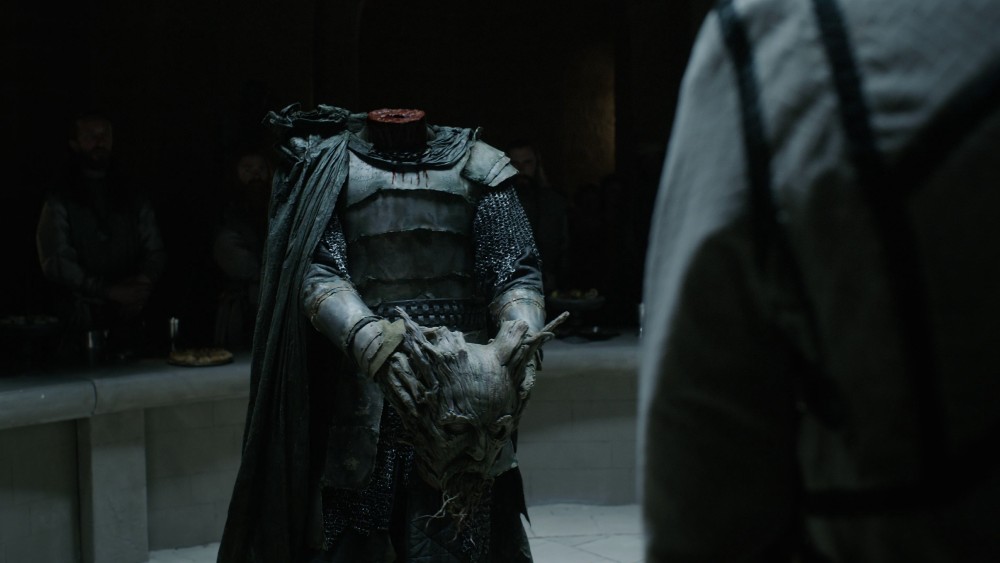
One of the things that immediately jumps out at anyone who watches David Lowery’s new Arthurian epic, The Green Knight, is how amazing the entire film looks with so much exemplary work by Lowery’s entire crafts team and crew in order to recreate those medieval times.
The film follows Dev Patel’s Sir Gawain, as he’s sent on a journey to face the challenge of the titular knight, which puts him into all sorts of fantastical environments and encounters with interesting characters, not all human. While many of the locations in Lowery’s film were real places all across Ireland, the work of Weta Digital’s VFX Supervisor, Eric Saindon, and his team, was crucial in bringing some of the more-than-human characters to life — a cadre of giants and a huggable fox, most notably — as well as enhancing those stark locations with visual effects.
Not only is Saindon a long-time Weta employee, having worked there going all the way back to Peter Jackson’s The Lord of the Rings (for which The Green Knight has received more than a few comparisons), but he’s also been working with Lowery over the course of his last few movies, including the Disney hybrid film, Pete’s Dragon.
Below the Line spoke with Saindon over Zoom from New Zealand last week.
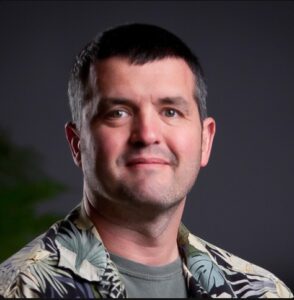
Below the Line: You’ve been at Weta a long time, probably longer than most of the other people I’ve spoken to from there.
Eric Saindon: I came in ‘99, and there were 35 people here at that stage, so it’s changed. [laughs]
BTL: You were one of the groundbreakers, one of the people at the beginning of it.
Saindon: There’s a couple here that have been here a little bit longer, but not that much at this stage. I seem to be working with people that weren’t born when I started at Weta.
BTL: You’ve also worked David Lowery before, on Pete’s Dragon? Did you work on some of his other movies, too?
Saindon: I worked on Pete’s Dragon and A Ghost Story, so it’s such a good group to work with, with David and [Producer] Toby [Halbrooks] and [Production Designer] Jade [Healy] and that whole Dallas crew. It’s such a creative group that it’s just a pleasure to work on movies with those guys.
BTL: He basically works with a lot of the same team, whether it’s at Disney or something smaller like A Ghost Story, he keeps the same team together?
Saindon: It’s pretty much always the same group for him. I mean, he does the same producers, for the most part, the music. He’s got a new DP that he’s working with a lot, Andrew, he’s just a young guy that’s really good at what he does, and Ghost Story and Green Knight really show the abilities that he has.
BTL: It’s really fascinating to see someone who goes from indie to Disney and then does something that’s almost heightened fantasy but bigger than any of his earlier films.
Saindon: If you look at David stuff, he doesn’t fit in any box whatsoever — every one of his films is completely different, and none of it even touches on the same subject or way of doing things. He explores different types of filmmaking and different ways of telling stories. If you watch any of his films, he’s usually exploring something in the film. In Ghost Story, he was showing another way to tell time. And even Pete’s Dragon, it’s a retake on a Disney movie, just in a completely different way than anyone has really done before. It’s a very creative group, and, they’re willing to explore in filmmaking, which is great. There’s a lot of films that are really stuck in a rut right now. It doesn’t work for everyone, right? Green Knight is not going to be the mainstream film for a lot of people. Everyone I’ve talked to — lots and lots of people will love it and lots of people are like, “I didn’t understand it.” It’s not the normal mainstream film, but it’s a really well-told story, and it’s a really interesting film. I think people that do go to it with an open mind are going to really like it.
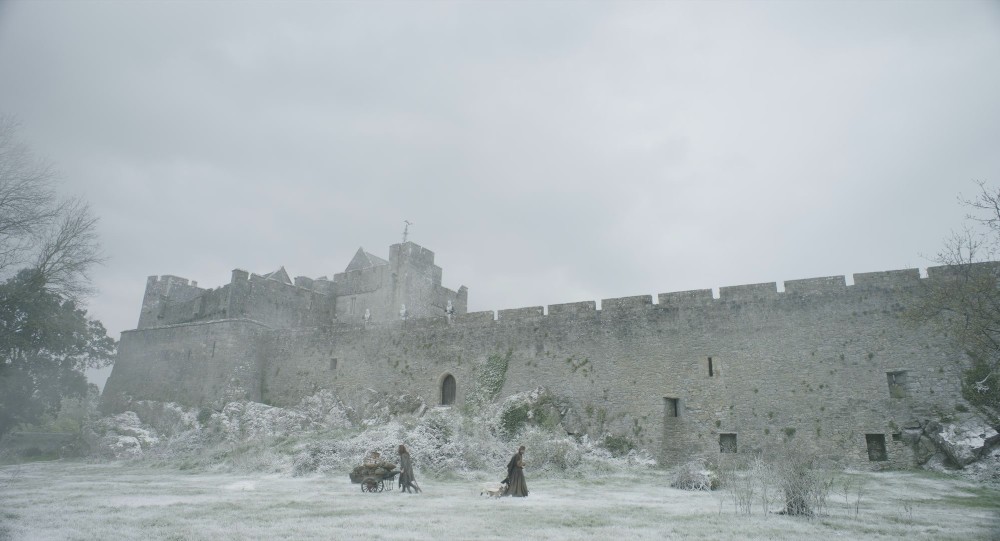
BTL: I know he comes from that editing/post world, so is he more involved in VFX than most filmmakers you’ve worked with?
Saindon: Oh, yeah. You shoot a scene and that night, David will go back to his hotel room and edit the scene and then want to talk about it the next day and say, “Hey, this is what we want to do with the visual effects for this scene. This is the path we want to take.” So, the day after you shoot a scene, you usually have a pretty good idea of what the visual effects are going to be, and almost exactly how they’re going to be edited into the film. It’s a really collaborative process with David, because he understands the process pretty well. You can really go through it with him and understand it, and it’s a really great process to work with.
BTL: I just read an interview with Jade, and I didn’t really get a sense from watching the movie how much were real rural locations in Ireland vs. VFX pieces, but I get a sense that he found a lot of real places.
Saindon: Green Knight was all locations. It was like going back to the original Lord of the Rings. Everything was shot on location. There were a few blue screens, you always have to have some kind of weather cover, and there’s always some interiors. I went over to Ireland for just a few days, because I was on another project at the same time that they were shooting. We went to all the different locations, and it was three days of driving around Ireland and scanning all the different locations. And it’s a lot of locations we went to. We didn’t even get them all, unfortunately, but they shot it all over Ireland in some amazing spots. It really comes across on the camera, too, some of the beautiful spots that went to, even just glimpses of these spots, they’re amazing spots.
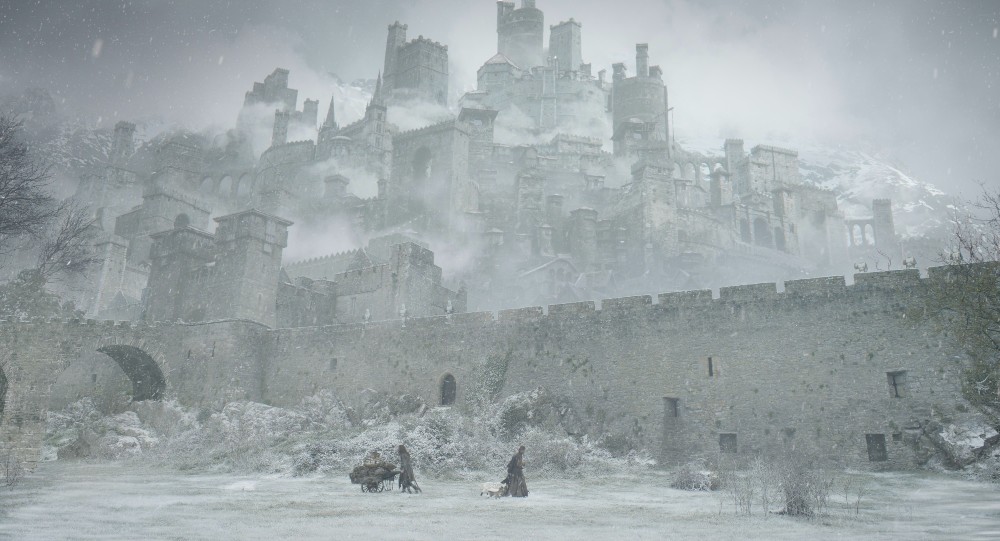
BTL: Did you do any sorts of scans or LIDARs of the locations?
Saindon: We did. We ran out to all the different locations and scanned several castles, a few houses, a few other locations that were in the set. There were a couple builds that Jade did — the throne room and a few other locations — that we went into and scanned. Then we went in and scanned these huge 10 acres of land for the different locations, like where the giants appear and the Cahir Castle, which is sort of in the middle of Ireland. It’s this great old medieval castle, that we scanned the whole castle. I probably went a little overboard, because I was exploring the castle as I was going into all these old passages and things. Having all that extra detail, like going into those different areas of the castle and scanning the rock detail, and all the detail that you just don’t think about these days and the type of intricate work they did back in the time when they were building these castles. If we capture that, we’re able to put that back into the CG builds we do, so that when we extend the castle, it still feels like just part of the castle itself. You just don’t question, so it’s always necessary to get stuff like that.
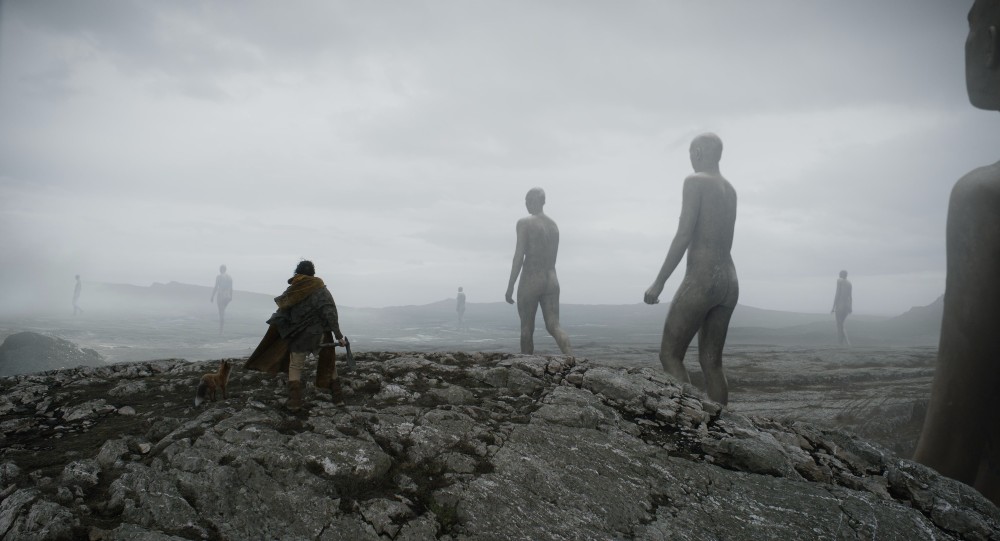
BTL: Weta is kind of known for creating immersive CG environments, so when I watch a movie like this, and can’t really tell what is visual FX. There’s like the giants, obviously, which were VFX, but otherwise, I couldn’t really tell where reality ended and VFX began. it’s great to see the mix between those two things.
Saindon: It’s like that kind of movie right? Not to go back to Lord of the Rings again, but like Lord of the Rings, we did 250 odd shots or 300 shots, and you never thought about it as a visual effects movie. I think this movie works the same way. If you watch it, you know there’s visual effects and there’s some obvious ones, like the giants, and the talking fox — the obvious visual effects — but I think a lot of the other effects, they just sort of disappear in there. They’re there to help tell the story and to help David with the process and give the feel, but they’re not in your face sort of visual effects. They’re just hidden away. And it’s not done enough these days. I know a lot of big movies need the big visual effects to tell the story and to make it work. but I really do enjoy working on some of these other projects where the visual effects are just hidden, and no one ever knows we did anything.
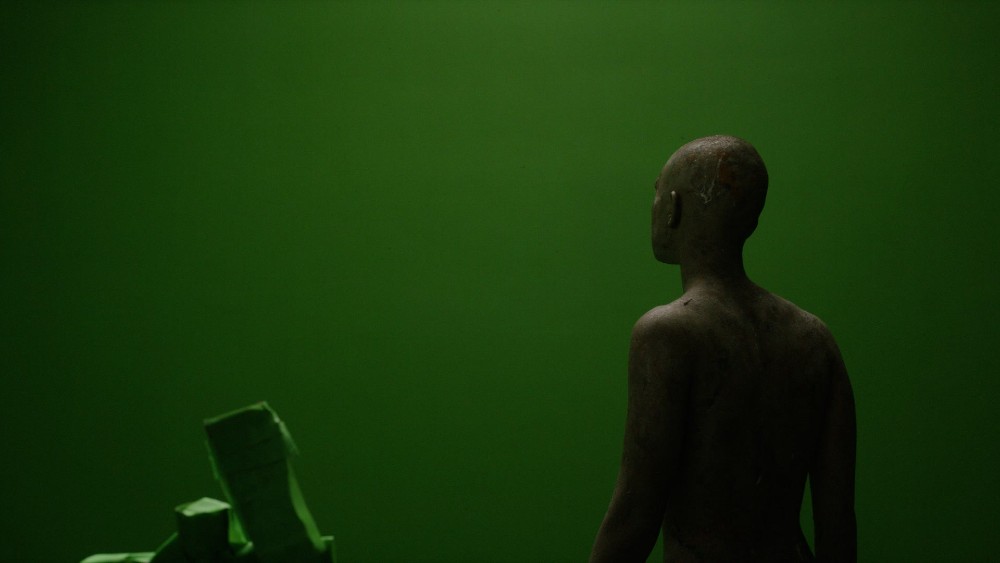
BTL: I do want to talk about the giants and the fox, as well, so beginning with the giants, were those real people who were enhanced using visual effects?
Saindon: I really liked the giants, because David, he purposely did not want to do CG on the giants, and not because he didn’t think we can do it with CG. For this whole film, he really wanted to… like when you’re done watching the film, he wanted you to think when was this created? When were these visual effects done? He wanted us to have the effect of glass matte paintings for some of the shots, for the background when you see the city in the background. And he wanted the Giants to be… shoot them at two different scales, and use live-action elements for the giants and do the old school how you would have had to do it back in the day. I had to go back to the cinematography book and look back and say, “Oh, man, if we’re going to do them at four times the scale, what frame rate do you have to do it at to make the scale work correctly?’ It’s been a while since I’ve actually had to go back and do that. Kev Cayhill, the on-set supervisor for us in Ireland, shot all of the Giants as individual elements, and they were just women painted up, shaved heads, and just went through all the different shots and shot us lots of elements, shot us a whole bunch of generic elements, so that we could basically take the performances here and then integrate them into an environment we built here and have the effect of them walking down through this valley as elements in this environment. Obviously, the close-up shots, they are all just shot on a green screen at 120 fps, if I recall, so that we got the motion. We got the proper feel for the jiggle in their bellies as they’re walking, the subtleties of the motion and the skin movement. Even how their breasts bounce or move when they’re walking, but they’re all prosthetic and make-up shot on green screen and then added in through comp and CG-enhanced environment to fit with Dev.
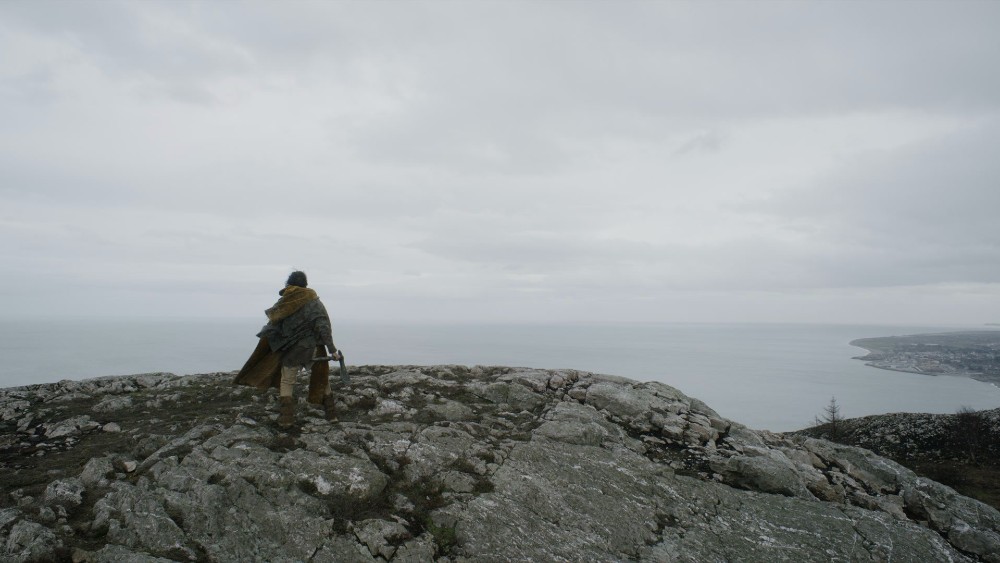
BTL: What is Dev looking at on set? Does he just have to use his imagination of what’s going to be there?
Saindon: It was a high-tech tennis ball on a stick, the normal process. [laughs] It was nothing more than that, and it’s sort of you go back to what works.
BTL: Those giants also became an amazing trailer moment, because the first time I saw that trailer in a theater, I was just blown away. It’s impressive.
Saindon: I really liked that scene. One of my favorite shots in the film is that shot of the giants going off, and the camera does that whole spin, and you see the big pack of them walking away. It’s just such a beautiful shot. I really liked that sequence. It came together very well.
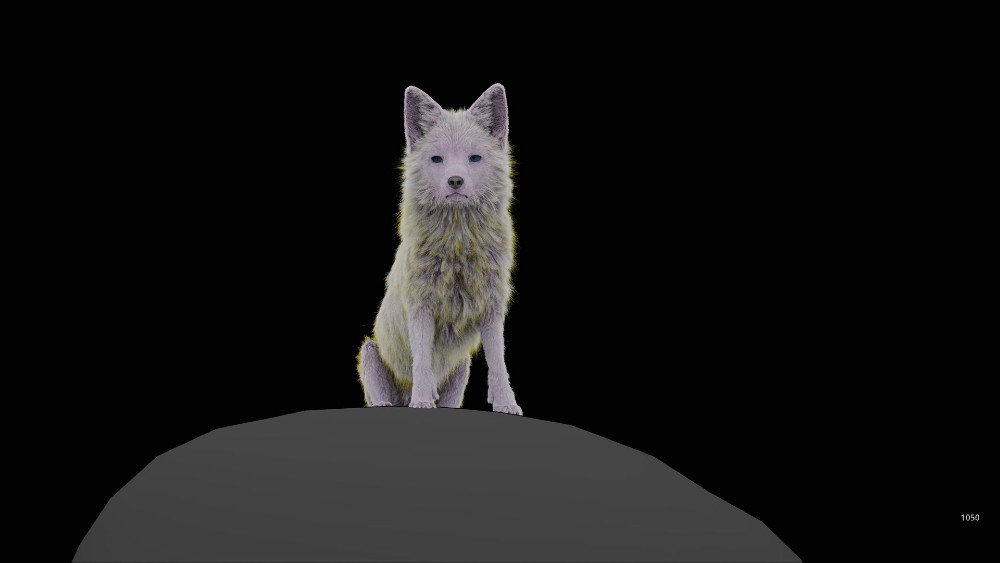
BTL: Getting into the fox who is also in that scene. I think Weta is genuinely known for being able to create these beautiful photo-realistic animals, and this is another one of those beautiful animals that people talk about almost as much as they would any of the actors in the movie.
Saindon: It’s awesome, isn’t it? The thing with the fox is David really wanted to roughen the fox up. He didn’t want him to be the ideal-looking perfectly fluffy fox. He wanted a matted down, someone that looks like they’ve taken some wear and tear. The fox went through a lot of revisions. Like our first one, we obviously always make the idealistic fox — the big fluffy hair, the perfect symmetry, that always looks perfect. And then you take it from there, and you really roughen it up, as if it’s been through the wringer a little bit. We had this great reference from set. When Kev went and got grey balls and all that other stuff from the prop store, he said, “Hey, you don’t have anything for us to use for lightning reference for a fox” and it turns out, they had a fox at the prop store that used to go and raid their dumpster, and they used to feed out back, and it died of natural causes, and they taxidermied it, and they had it back on the shelf in the back room. [laughs] He actually had that fox on set and walked it around the different shots, so we had really good lighting reference, and we knew what it was supposed to be. And David got used to seeing this sort of ratty, somewhat poorly taxidermied, fox. He got used to the missing fur in certain spots, and a little bit more ragged, and that’s really what he wanted to get into these shots.
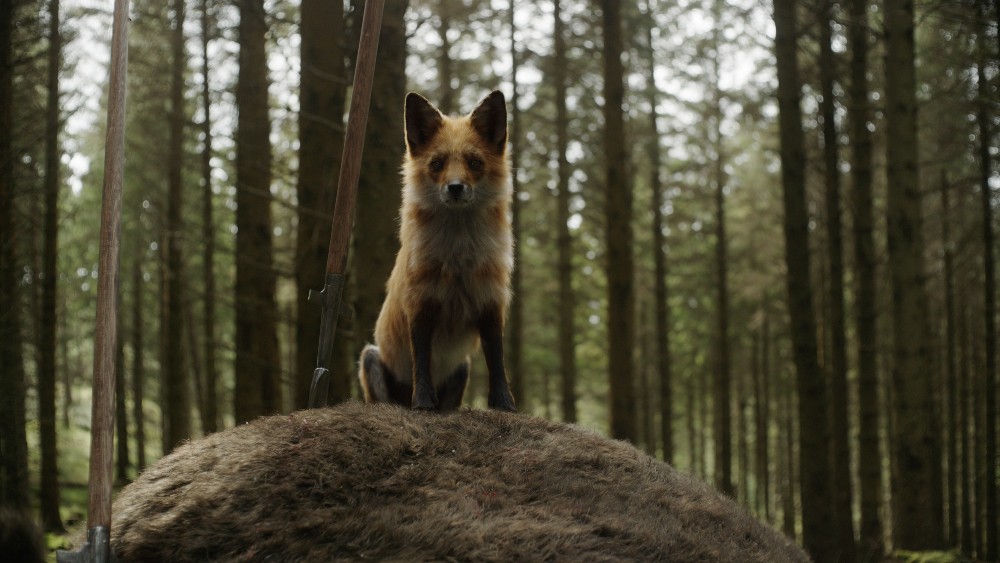
BTL: It makes the fox more lovable actually, and having that rattiness just makes you want to reach into the film and hug it.
Saindon: It fits with Dev, too, right? He’s got that look for this film, a little bit more beaten down and ratting, and it sort of fits with the path and the journey he takes. I think the subtlety of the animation that Mike Cozens, our animation supervisor, did on the fox really helped, because the motion really helps fit into the shots, the animation itself, and then the facial isn’t overdone. There’s a lot of movies that talking animals can be overplayed, and the lips start flapping around, and the nose gets pushed out of place, and they really just don’t look right. They throw you out of the film very quickly. I think the fox was played in such a way that you see the lips move a little bit, and you see the jaw move, and you can buy that he’s talking, but it’s not over-played, it’s not over-animated, and you just get that subtlety of it. I think that’s another thing we wanted anyways, because all the way through you’re not really supposed to know, is the fox actually talking, or is it in his head, or where’s it coming from? So keeping it nice and subtle and getting it to work that way I think was in our favor anyway.
BTL: The dragon in Pete’s Dragon was also really well-done, and I’m old enough to have seen the original animated movie in theaters or on the Wonderful World of Disney, so that was wild seeing that brought to life as a CG character.
Saindon: David had the same idea for that. I mean, we used a fox for reference for Pete’s Dragon, for motion, especially when he was jumping around in the river. We had gone through a lot of fox references with David prior to that anyways for a different movie. So it’s something we had used before, and he liked the subtlety of the animation, which I think is great.
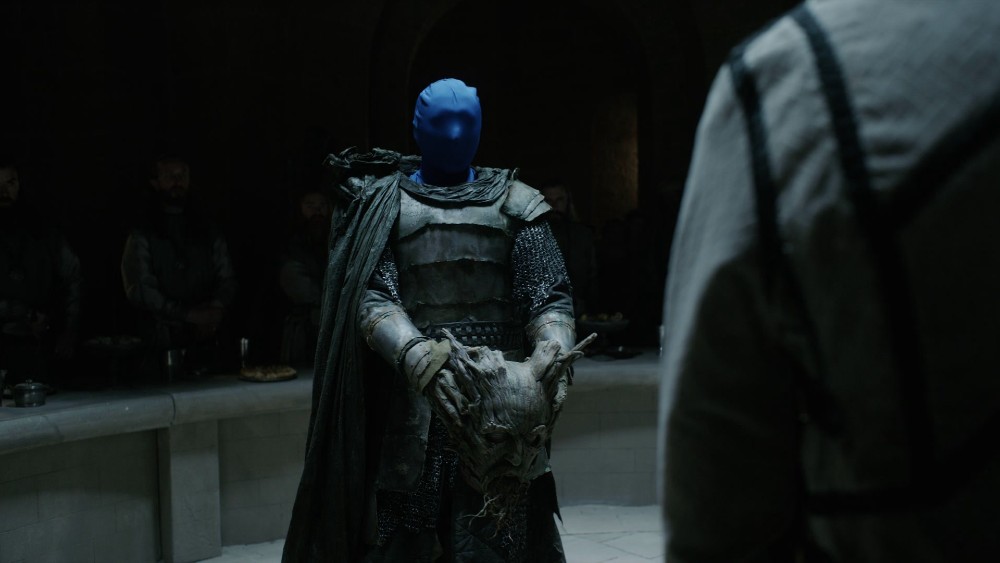
BTL: Was The Green Knight something David had been talking about doing for a long time? I’m not sure if he’s someone who likes to finish something he’s working on before even thinking about other things.
Saindon: Honestly, David has so many ideas in his head. He’s always writing other films. He’s always got five movies on the go in his head. He’s so creative in that way, that he’s always got something. So during Pete’s Dragon, he was talking about A Ghost Story, and he was talking about this Green Knight script also that he was starting to play with. So I’ve known about it for a little while. When did we finish this? Right before the pandemic is when I was actually heading to the airport when New Zealand closed its borders. That’s when we sort of finished up on it, and then as a blessing and a curse, I guess, David had more time to actually work on the edit. And he actually changed some visual effects shots, updated a few things, changed his edit around a little bit from what it was going to be at South by Southwest. He changed some of the shots and actually made a bit more of a tighter movie and a more interesting movie during the pandemic, when everyone was in lockdown.
BTL: It seems like New Zealand ended up being one of the best places to be for a pandemic, so I hope the New Zealand Tourist Board mentions that in their ads. Did you do anything for the dream sequence later in the movie?
Saindon: We did the Green Knight up against the wall, and the face morph that happens that’s really subtle. It’s something that a lot of people go see the film and not even notice anything happened there. But when the Green Knight is up on the wall, his face actually morphs into all the different characters that he basically [encountered] throughout the movie. It was one of the things that David really wanted to have in there, to really show the process and how he was all of these other characters, and you just never really put that together. When you come out of one of these films for David, you start to think about the film and go, “Oh, that’s why this was this.” Whether you hated it or loved it, you leave the film still thinking about it. I think it’s one of the benefits of a lot of these films David does. Some of these other big blockbuster movies you go to nowadays, you come out of it, and you just think, “I don’t even remember what happened in the beginning. You come out of one of David’s films, and you really think about it. It’s one of those things that it’s great working on as a visual effects artist, you get to work on these films where you really helped to tell the story, not just blow stuff up.
The Green Knight is still playing in theaters nationwide. You can also read Below the Line’s interview with the movie’s Costume Designer here.
All photos courtesy of A24 and Weta Digital. Click on images for larger versions.





